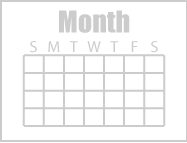| Perseids Meteor Shower August 12, 2024 ⬅︎ |
 |
The King of Fireballs
The Perseids is a rich meteor shower with many bright meteors, lots of trains and the most fireballs — all with the comfort of a warm summer night. No wonder it is the northern hemisphere’s most popular shower. It is active from July 17 through August 24 but has a narrow peak that must be timed right. See below for the best night this year.
From exceptionally dark, clear skies, a rate of 100+ meteors per hour at the peak is possible. Even from typical rural skies, a rate of one meteor per minute is not unusual.
Perseid meteors are bright and many have trains, or smoky trails, that make them easy to spot. Perseids are also known as the best shower for producing fireballs, exceptionally brilliant and colorful streaks that sometimes appear to break up or explode — these can be breathtaking!
If you know how to find Cassiopeia, then it it will be easy to find this shower’s radiant below in Perseus.
The meteors are from the dusty debris left behind by Comet Swift-Tuttle. This comet orbits the Sun every 130 years and is expected to return in 2126.
| Dates |
Rate |
Speed |
Radiant |
Parent |
2024 Peak |
| Jul 17 - Aug 24 |
100 |
37 mi/s |
Perseus |
Comet Swift-Tuttle |
Aug 12/13 |
|
| Viewing Perseids Meteor Shower | | Level | Easy | Rating |  | Best Viewing | Night of August 12/13 | | Find | To find the radiant, look NE to find Cassiopeia and its leftmost bright star. Look below for the bright star Mirfak in Perseus. The radiant is close to the halfway point of these stars. (See above.) If you know how to find the Double Cluster, you can use it as a substitute for the radiant. In the Starry Hill region, the radiant is circumpolar (always above the horizon) which means you can start viewing meteors as soon as the sky is dark enough.
|  | In general with meteor showers, the best viewing begins after midnight and improves each hour until just before dawn.
|  | For 2024, the news is mixed. A bright Waxing Gibbous moon will be rising at about 2:48 PM and will make it tough to view any but the brightest of meteors until it sets around 11:28 PM. After that, the viewing should be great. |
|
| More info: All about Shooting Stars, Meteors and Meteor Showers
|



